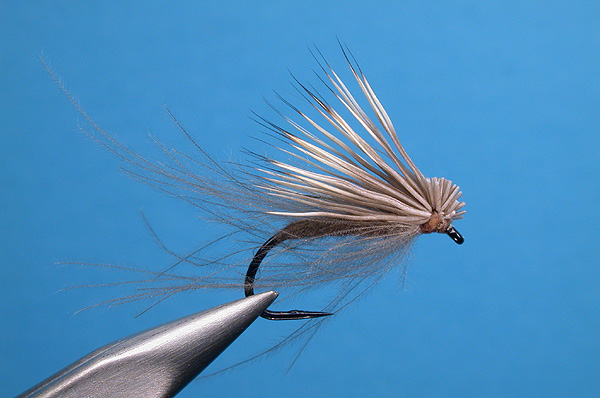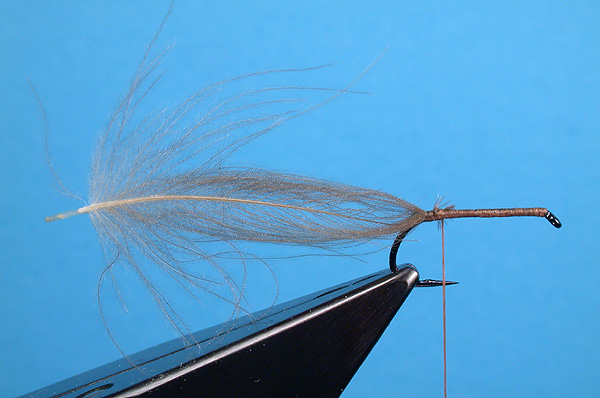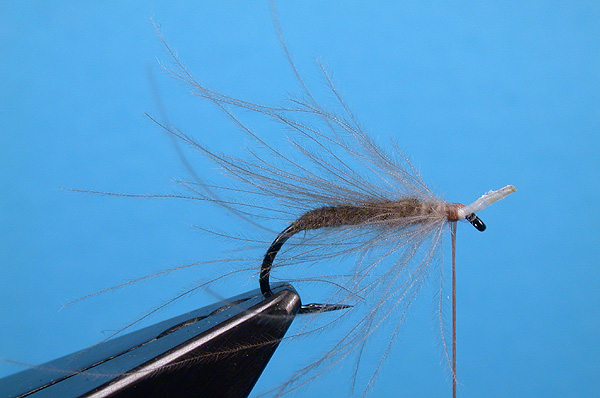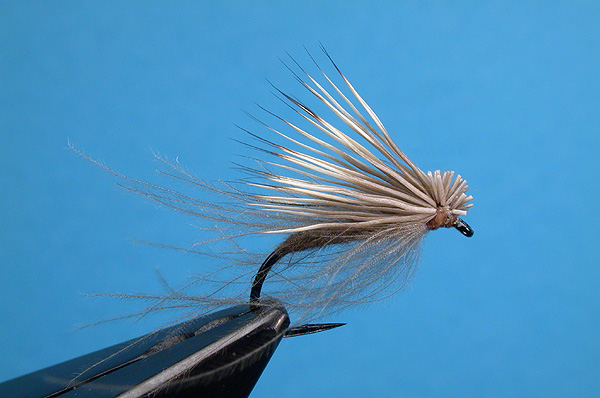CDC&Elk

- Select a (Type 1) CDC feather of the required color and size. (The longest barb approx. 2 times shank-length) Hold the CDC feather at the butt with the fingers/thumb of your left hand, and draw the feather between thumb and indexfinger of your right hand towards the tip, bunching the tips together.
- Tie in the bunch, butt pointing backwards over the bend of the hook. Tie down with two tight turns of thread, then slip a third turn under the tips, effectively forcing them upwards, and follow with a fourth turn over the tips, just forward of the third turn. You have now locked the CDC barbules in place and have ensured the feather will not pull out during fishing. Spiral thread forward to eye, then wrap back one touching turn away from the eye of the hook.

- Clamp butt with hacklepliers and wind the CDC feather towards the eye in touching turns. You will find that the rear half of the body will resemble a dubbed body, but as you progress towards the eye, more and more free barbules will stand out. Stroke these backwards with each turn. A little practice will enable you to arrive at the eye with only the bare part of the stem left.

- Tie off with one or two tight turn(s) of thread, unclip the hackle but do not trim yet. Tighten with another two turns of thread. You will see that the CDC butt will move with the thread, tightening a fraction further at the tie-off point. Trim the CDC butt.
- Take a small amount of straight, fine-tipped deer hair. (I use early season mule deer) Even the tips in a stacker. Lay the bunch on top of hook, parallel to the shank. Measure the tips so the wing will be just long enough to reach the outside bend of the hook, and no longer. Trim butts square (perpendicular to the strands) with the front of the eye of the hook prior to tying in the wing.
- Tie down the wing with two tight wraps of thread over the hair stubs. Make a third wrap with the thread, through the stubs, at a 45 degree angle. Fourth wrap goes under the stubs. Complete the fly with a whip finish under the stubs, and a little varnish.

The completed CDC&Elk.
Tying instructions:
Fishing suggestions:
It is by far my most productive dry to use during mayfly(!) hatches, as well as my staple search pattern during hatchless periods.
Fish it as an emerger in the film. Or as a straight wet. It has proven to cover the full spectrum of dry, 'damp'and wet.
As an extremely effective 2-materials 2-minutes-to-tie this is one hard to pass up pattern. I suggest you try it! ;-)